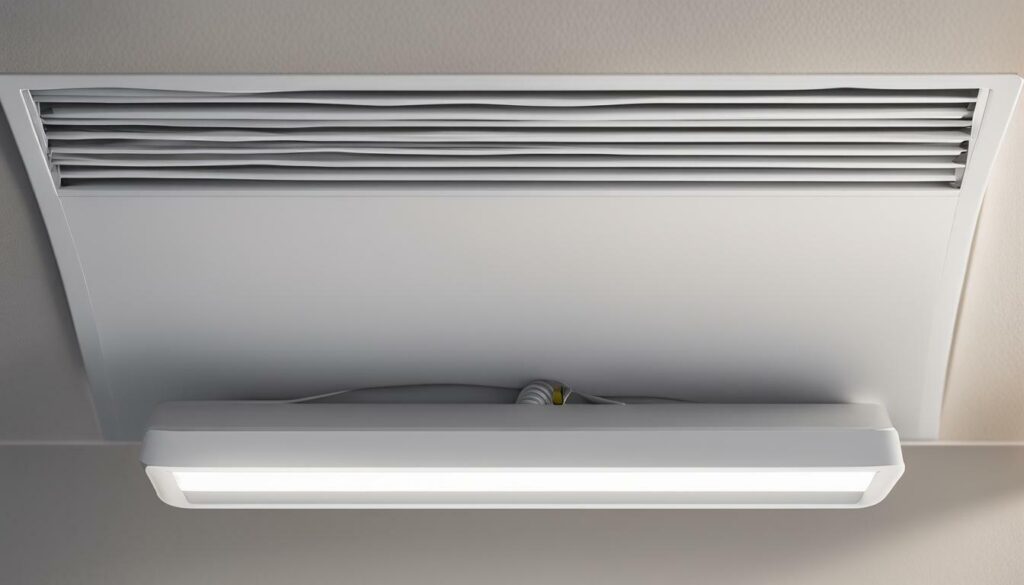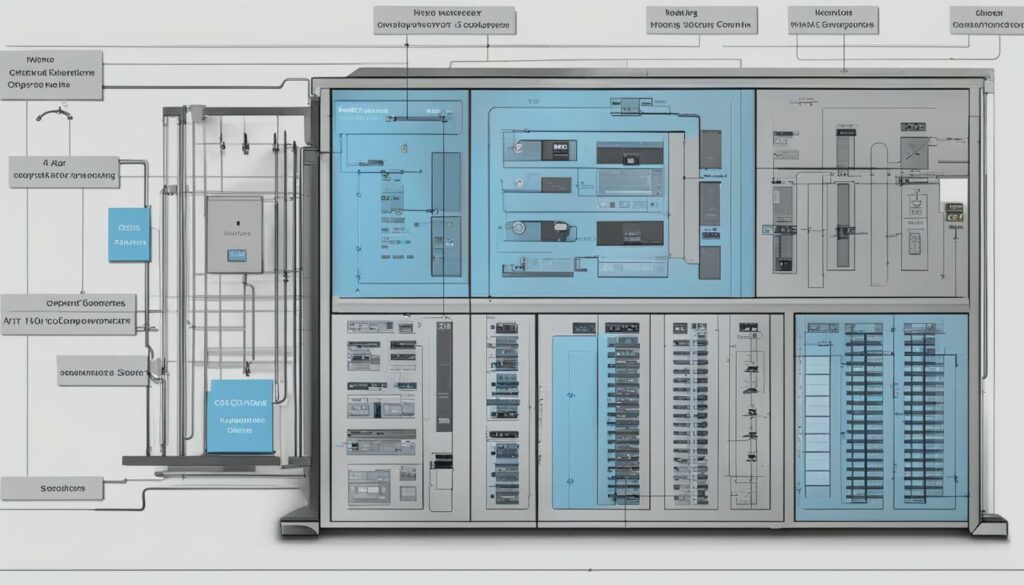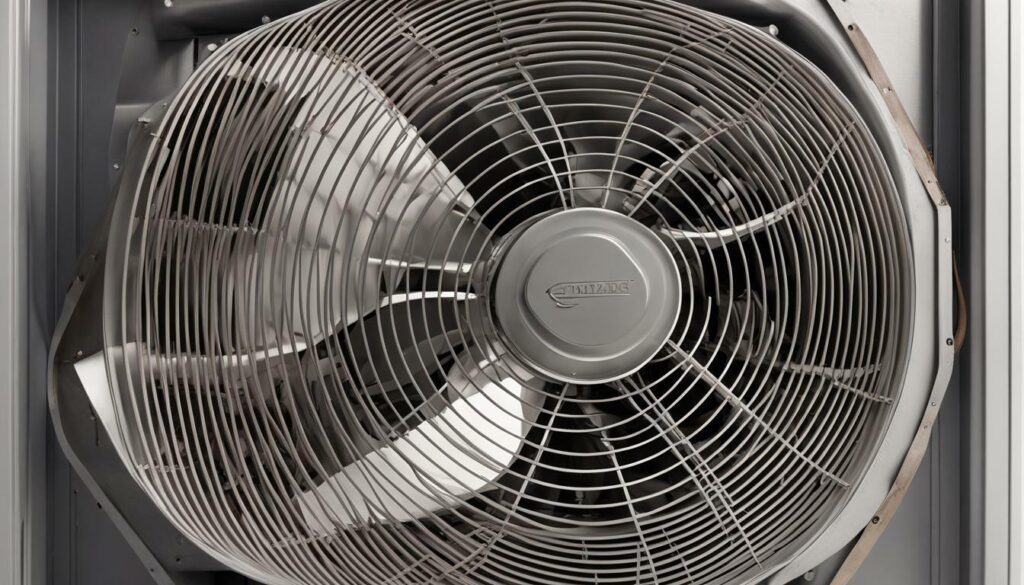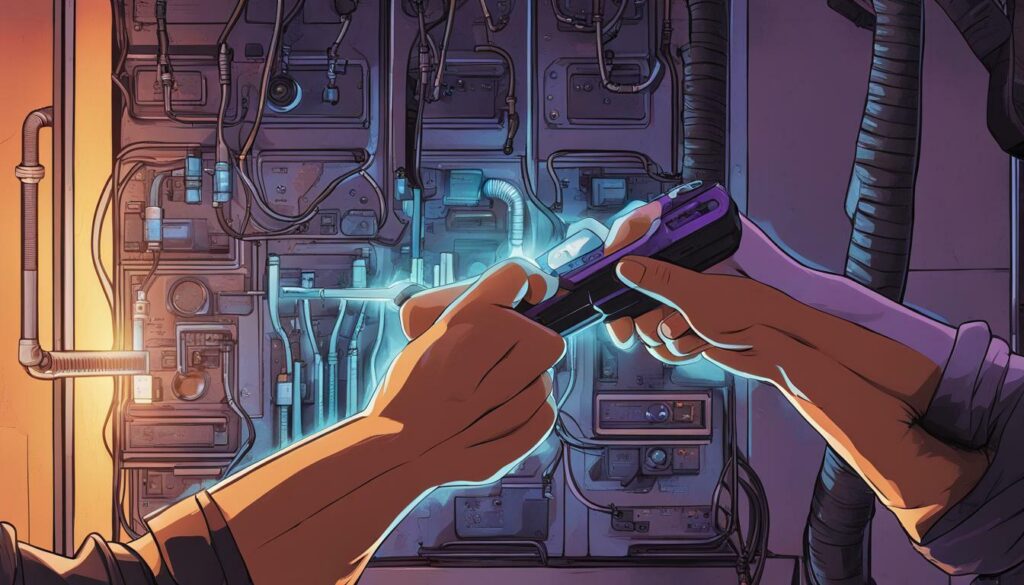Welcome to your guide on HVAC maintenance! As a responsible homeowner, you understand the importance of regular maintenance to keep your heating, ventilation, and air conditioning (HVAC) system running smoothly. Without it, your HVAC system could be prone to breakdowns and higher energy costs.
But what does HVAC maintenance include? In this section, we will explore the essential tasks performed during regular HVAC maintenance and why they are crucial for your system’s efficiency and longevity. By the end of this section, you will have a better understanding of what you need to do to maintain your HVAC system and why it’s so important.
Key Takeaways:
- HVAC maintenance is essential for keeping your system running efficiently.
- A regular maintenance schedule can help you avoid costly breakdowns and repairs.
- By performing regular maintenance tasks, you can extend the lifespan of your HVAC system.
The Basics of HVAC Maintenance
Regular HVAC maintenance is essential to ensure optimal performance and efficiency of your system. Here is a checklist of some of the essential HVAC maintenance tasks:
| Task | Frequency |
|---|---|
| Clean and replace air filters | Monthly or as needed |
| Inspect and clean ducts | Every 3-5 years |
| Check and adjust thermostat settings | Seasonally or as needed |
| Lubricate moving parts | Annually |
| Check electrical connections | Annually |
| Test and calibrate controls | Annually |
| Evaluate refrigerant levels | Annually |
| Check and clean condenser coils | Annually |
You may also consider hiring a professional HVAC maintenance service to perform a comprehensive inspection and maintenance of your system. A trained technician can identify potential issues and ensure your system is operating at peak performance.
Following an HVAC system maintenance guide and performing these essential HVAC maintenance tasks will help ensure your system is running efficiently and reliably throughout the year.


Cleaning and Air Filter Replacement
Regular cleaning and air filter replacement are essential HVAC maintenance tasks that can significantly improve system performance and indoor air quality. By adhering to a comprehensive HVAC maintenance checklist, you can ensure that your HVAC system operates at peak efficiency, minimizing energy waste and reducing costs.
When it comes to cleaning your HVAC system, it is important to begin by shutting off power to the unit. This will ensure that you do not accidentally get shocked while cleaning. Remove any debris and dirt from the outdoor and indoor units, using a soft-bristled brush or a vacuum cleaner. Ensure that you clear any clogs in the drainage lines to prevent water damage.
The next essential task is to replace the air filter regularly. A dirty air filter can restrict airflow, leading to poor indoor air quality and decreased system efficiency. Depending on the type of filter you use and the frequency of use, you may need to replace the filter every one to three months. Check the manufacturer’s instructions for guidance on when to replace the filter.
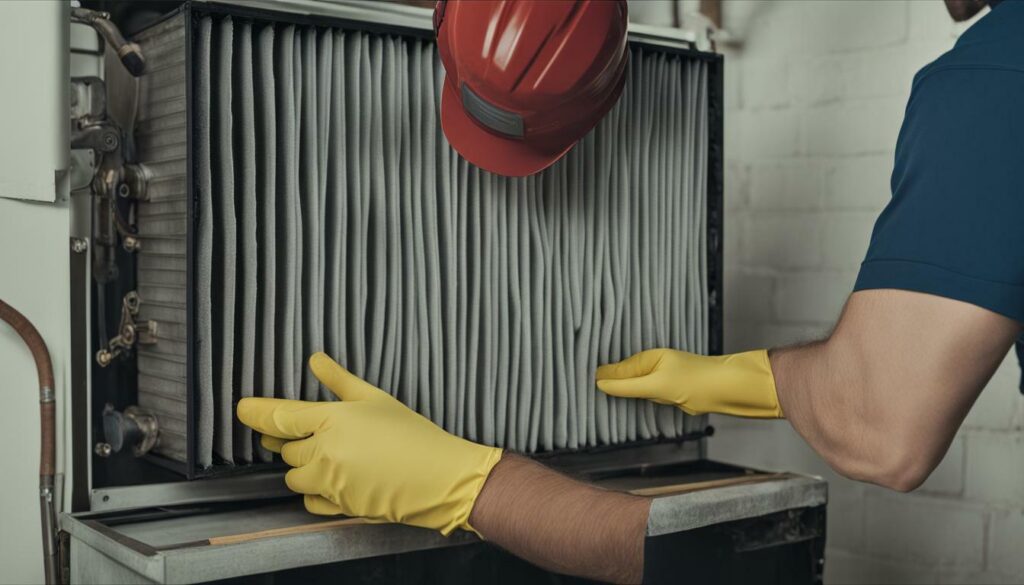

Pro tip: Write down the date when you replace the air filter and set a reminder for the next replacement. This will ensure that you do not forget to replace it, leading to decreased system performance.
Inspecting and Cleaning Ducts
Regular inspection and cleaning of your HVAC system’s ducts are essential HVAC maintenance tasks for ensuring optimal performance and indoor air quality. Over time, dust, dirt, and other contaminants can accumulate in your ducts, reducing airflow and increasing the risk of respiratory issues. Therefore, it is recommended to include duct inspection and cleaning in your HVAC maintenance checklist.
To inspect your ducts, you can start by visually checking for any signs of dirt, debris, or mold. You can also use a flashlight to look for blockages or damage to the ducts. Next, you can use a vacuum or brush to remove any loose debris or dust. For more thorough cleaning, consider hiring a professional HVAC technician who has the necessary equipment and expertise to clean your ducts properly.
Keep in mind that dirty or clogged ducts can also cause your HVAC system to work harder and consume more energy, leading to higher utility bills and decreased efficiency. By regularly inspecting and cleaning your ducts, you can improve your system’s efficiency and prolong its lifespan.
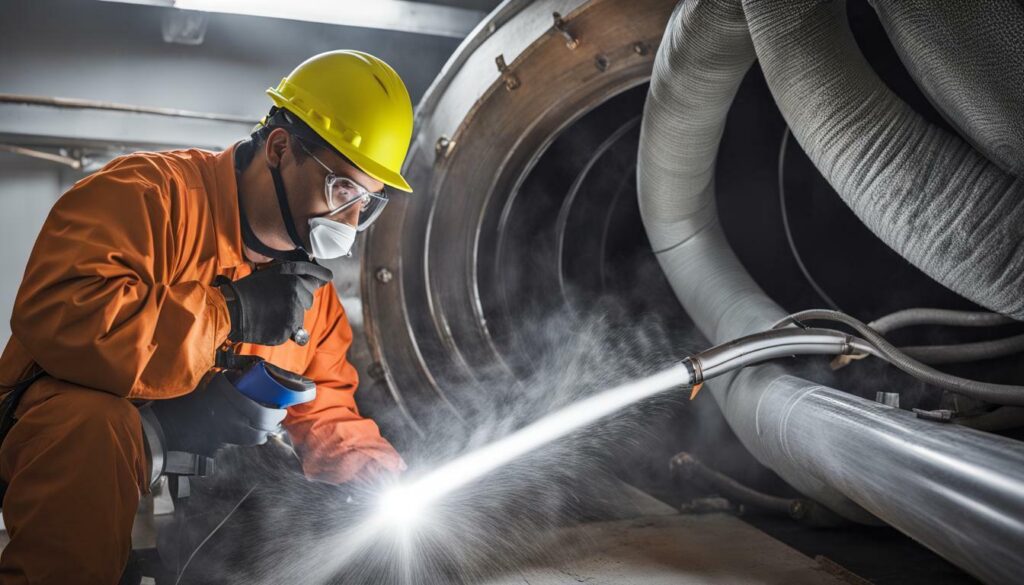

Checking and Adjusting Thermostat Settings
One of the essential HVAC maintenance tasks on your checklist should be checking and adjusting your thermostat settings. Your thermostat controls the temperature of your home, and when it’s not working correctly, it can result in uncomfortable temperatures and increased energy bills.
Start by checking your thermostat settings to ensure they are programmed correctly. Incorrect settings can lead to your system running when it shouldn’t be. This can result in increased wear and tear on your system as well as higher energy bills.
Adjusting your thermostat settings can also help you optimize your energy efficiency and comfort level. Consider adjusting your thermostat settings when you’re out of the house or sleeping to save on energy costs.


Regularly checking and adjusting your thermostat settings can help prevent unnecessary wear and tear on your system and save you money in the long run. Make sure to add this important task to your HVAC maintenance checklist.
Caring for Your HVAC System: Lubricating Moving Parts
Regular HVAC maintenance is essential to keep your system running smoothly, and lubricating moving parts is one important task on your HVAC maintenance checklist.
When your HVAC system’s moving parts lack proper lubrication, friction can cause wear and tear that shortens the lifespan of your system and leads to costly repairs. By lubricating these parts regularly, you can reduce friction and extend the life of your system.
Some essential HVAC maintenance tasks related to lubrication include:
- Checking for signs of wear and tear on moving parts such as motors and bearings
- Cleaning and lubricating these parts as needed
- Ensuring that all parts are properly aligned and making any necessary adjustments
Lubrication is not a task that should be skipped or left to chance. By including it on your HVAC maintenance checklist and performing it regularly, you can ensure that your system runs smoothly and efficiently for years to come.
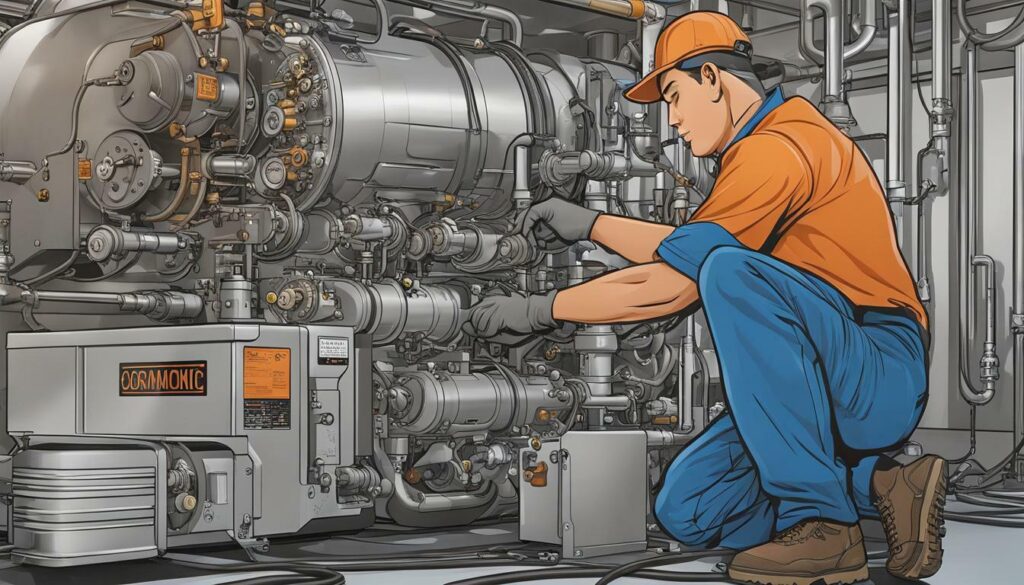

Checking Electrical Connections
One of the essential HVAC maintenance tasks that you must carry out is checking the electrical connections. Faulty or loose electrical connections can cause your system to malfunction or, worse still, become a safety hazard. Therefore, it’s crucial to inspect the electrical connections regularly to ensure that they’re tight and making proper contact.
Loose or corroded electrical connections can lead to high resistance that can cause your system to overheat, short-circuit, or trip your circuit breaker. If you don’t take electrical issues seriously, they can lead to serious problems, such as electrical fires, which can be life-threatening.
Using an HVAC maintenance checklist can help you inspect and tighten all electrical connections that power your system. As you inspect the connections, look for signs of wear, frayed wires, or corrosion. If you notice any of these issues, contact a professional HVAC technician to inspect and repair your system promptly.
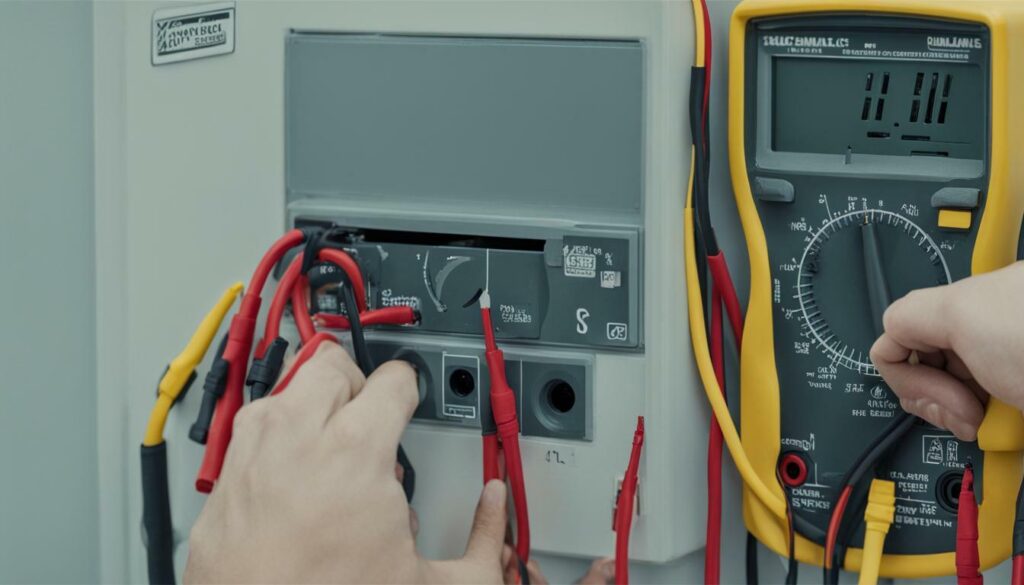

Essential HVAC Maintenance Tasks for Checking Electrical Connections
Here’s a quick rundown of the essential HVAC maintenance tasks for checking your system’s electrical connections:
| Steps | Description |
|---|---|
| Turn off power supply | Before you start inspecting your system’s electrical connections, ensure that you turn off the power supply from the circuit breaker. This helps prevent electrocution or damage to your system. |
| Inspect electrical connections | Once you’re sure that the power supply is off, inspect the electrical connections to ensure that they’re tight and secure. |
| Look for signs of wear | Check for signs of wear, including frayed wires, corrosion, or burn marks. Address any of these issues immediately |
| Replace faulty wires | If you notice any faulty wires, replace them with new ones. |
| Test system | After inspecting and tightening all electrical connections, turn on the power supply and test your system to ensure that it’s functioning correctly. |
By regularly checking your system’s electrical connections, you’ll not only prevent potential safety hazards but also extend the lifespan of your HVAC system.
Testing and Calibrating Controls
Controls are the brains behind the heating, ventilation, and air conditioning (HVAC) system. They are responsible for maintaining optimal temperature and humidity levels in your home or office. Over time, they can become less accurate due to wear and tear, leading to inefficient system performance and higher energy bills. Therefore, it’s crucial to test and calibrate controls regularly as part of your HVAC maintenance checklist to ensure that your system is running at its best.
Testing the controls involves verifying that all the functions of the system are working as intended, including the thermostat, sensors, and safety switches. Calibration, on the other hand, ensures that the system is accurately interpreting and responding to the signals it receives from the controls. This process involves adjusting the settings and parameters of the control unit to match the desired performance specifications.
Some of the essential HVAC maintenance tasks related to testing and calibrating controls include:
- Verifying thermostat accuracy and adjusting as needed
- Checking and resetting safety switches
- Testing sensors and adjusting as needed
- Verifying system sequence of operations
Failing to maintain and calibrate your controls can lead to various issues, such as inaccurate temperature readings, system cycling on and off frequently, and even complete system failure. Therefore, it’s essential to follow your HVAC system maintenance guide and have a professional inspect and calibrate your controls regularly.
By maintaining and calibrating your controls, you can improve energy efficiency, enhance system performance, and prolong the lifespan of your HVAC system while saving you money on energy bills.
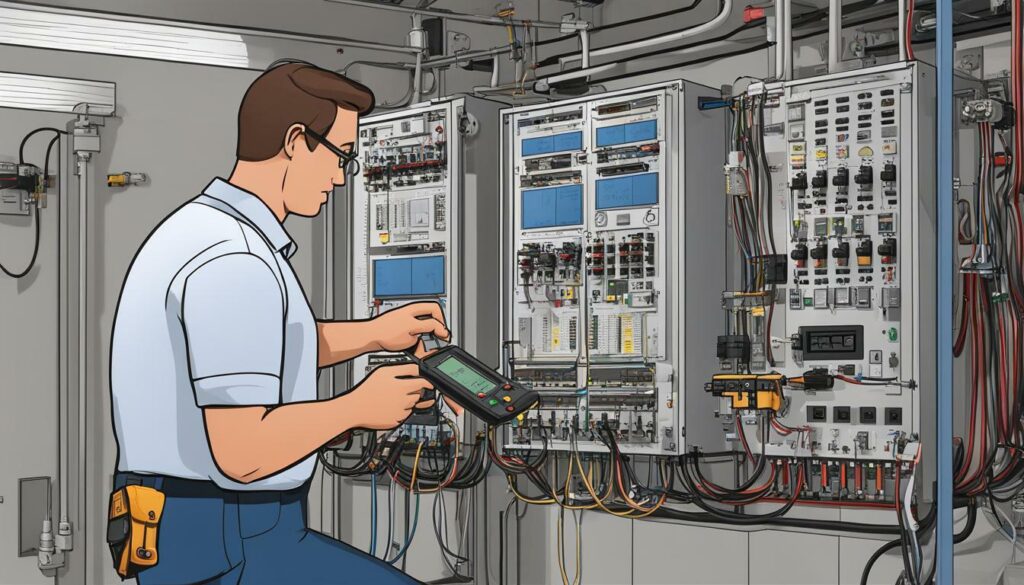

Evaluating Refrigerant Levels
Checking refrigerant levels is one of the essential tasks in your HVAC maintenance checklist. Proper refrigerant levels help optimize cooling efficiency, ensure the smooth running of your system, and prevent breakdowns.
Low refrigerant levels can lead to your system running harder, resulting in higher utility bills and a shorter lifespan of your HVAC system. Hence, regular evaluation of your refrigerant levels is vital to ensure your system’s optimal performance.
If you find that your system’s refrigerant levels are low, it’s essential to address the issue immediately. Low refrigerant levels could indicate a leak in your system’s refrigerant lines, which requires professional attention.
When it comes to essential HVAC maintenance tasks, evaluating refrigerant levels should be at the top of your list. Doing so helps to optimize your system’s cooling efficiency and reduce the risk of costly repairs or even replacement.


Checking and Cleaning Condenser Coils
The condenser coils are an essential component of your HVAC system and play a crucial role in the heat exchange process. Over time, these coils can become dirty and clogged, hindering the efficiency of the system. Therefore, it’s important to include checking and cleaning condenser coils as an essential HVAC maintenance task in your checklist.
When checking the condenser coils, you should ensure that they are straight and free of any damage or corrosion. If there are any signs of damage, you should contact a professional HVAC technician to assess the extent of the issue. If the coils are straight and in good shape, you can proceed to cleaning them.
Use a soft-bristled brush or a specialized coil cleaner to remove any dirt, debris, or buildup on the surface of the coils. Avoid using high-pressure water as it can cause damage to the fins or bend them out of shape. Once you have cleaned the coils, use a coil comb to straighten any fins that may have become bent in the process.
Regularly checking and cleaning your condenser coils can improve the efficiency of your HVAC system, reducing energy consumption and minimizing wear and tear on the system. This maintenance task can also help extend the lifespan of your HVAC system, saving you money in the long run.
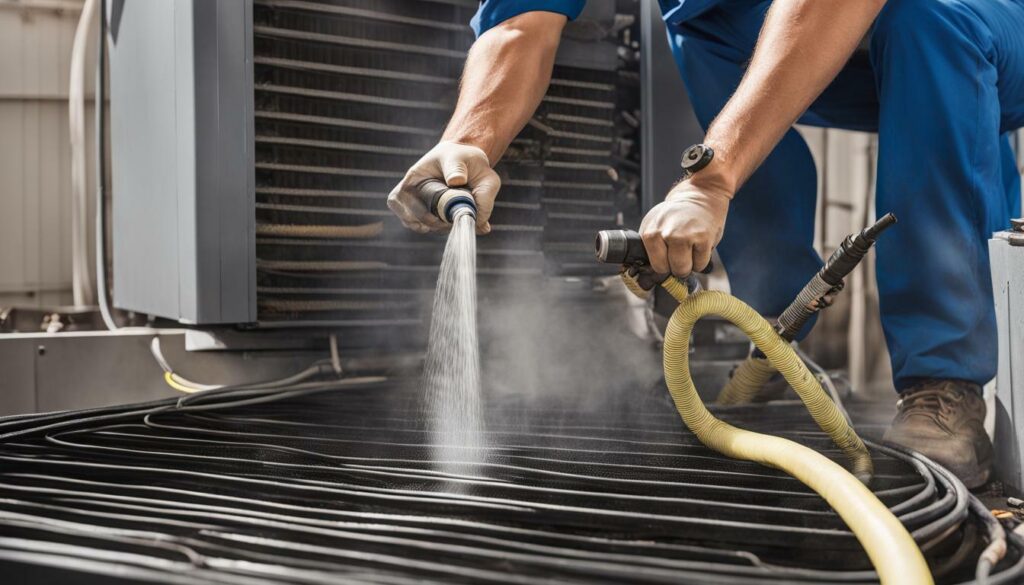

Don’t forget to keep checking your HVAC maintenance checklist and ensure that cleaning the condenser coils is one of the essential HVAC maintenance tasks.
Scheduling Professional HVAC Maintenance Services
While regular HVAC maintenance tasks can be performed by homeowners themselves, it is recommended to schedule professional maintenance services at least once a year. Professional HVAC technicians are trained and equipped to perform more in-depth inspections and cleanings, ensuring your system is functioning at optimal levels.
During a professional maintenance service, a technician will thoroughly inspect and clean all components of your HVAC system, including the ducts, coils, and connections. They will also test and calibrate controls and evaluate refrigerant levels. Any issues or potential problems will be identified and addressed before they can develop into more significant and costly repairs.
Additionally, scheduling professional HVAC maintenance services can save you money in the long run. By ensuring that your system is functioning efficiently, you can reduce energy usage and lower your utility bills. The cost of a professional maintenance service varies depending on the size and complexity of your system, but it is a small price to pay for the peace of mind and savings it can provide.


Don’t wait for your HVAC system to break down before seeking professional maintenance services. You can schedule a service appointment with a qualified HVAC technician in your area by contacting your local HVAC company.
Conclusion
In conclusion, understanding what HVAC maintenance includes is essential for ensuring that your system performs optimally and lasts as long as possible. Regular HVAC maintenance helps to identify potential issues before they become major problems, improving the overall functioning of your system and significantly reducing the likelihood of breakdowns.
By adhering to an HVAC maintenance checklist and carrying out essential tasks such as cleaning, air filter replacement, duct inspection, thermostat adjustment, lubrication of moving parts, inspection of electrical connections, testing and calibration of controls, and evaluation of refrigerant levels, you can keep your system running smoothly and efficiently.
It is important to note that while you can carry out some of these tasks yourself, others require professional expertise. By scheduling regular professional HVAC maintenance services, you can benefit from the expertise of trained professionals who can detect and resolve any issues quickly and efficiently, potentially saving you money in the long run.
In short, regular HVAC maintenance is an investment in the performance and longevity of your system. By knowing what HVAC maintenance includes and scheduling regular professional services, you can ensure that your system operates at peak efficiency and avoids costly breakdowns.
So, what does HVAC maintenance include? Everything from cleaning and air filter replacement to duct inspection, thermostat adjustment, and evaluation of refrigerant levels. Keep these tasks in mind as you care for your system and enjoy the peace of mind that comes with knowing that your HVAC system is in good hands.
FAQ
Q: What does HVAC maintenance include?
A: HVAC maintenance includes tasks such as cleaning and replacing air filters, inspecting and cleaning ducts, checking and adjusting thermostat settings, lubricating moving parts, checking electrical connections, testing and calibrating controls, evaluating refrigerant levels, and checking and cleaning condenser coils.
Q: Why is regular HVAC maintenance important?
A: Regular HVAC maintenance is important because it helps ensure optimal system performance, energy efficiency, and indoor air quality. It also helps prevent costly breakdowns and extends the lifespan of your HVAC system.
Q: What are the benefits of HVAC maintenance?
A: The benefits of HVAC maintenance include improved energy efficiency, reduced energy costs, enhanced indoor air quality, increased comfort levels, extended system lifespan, and peace of mind knowing that your HVAC system is working properly.


